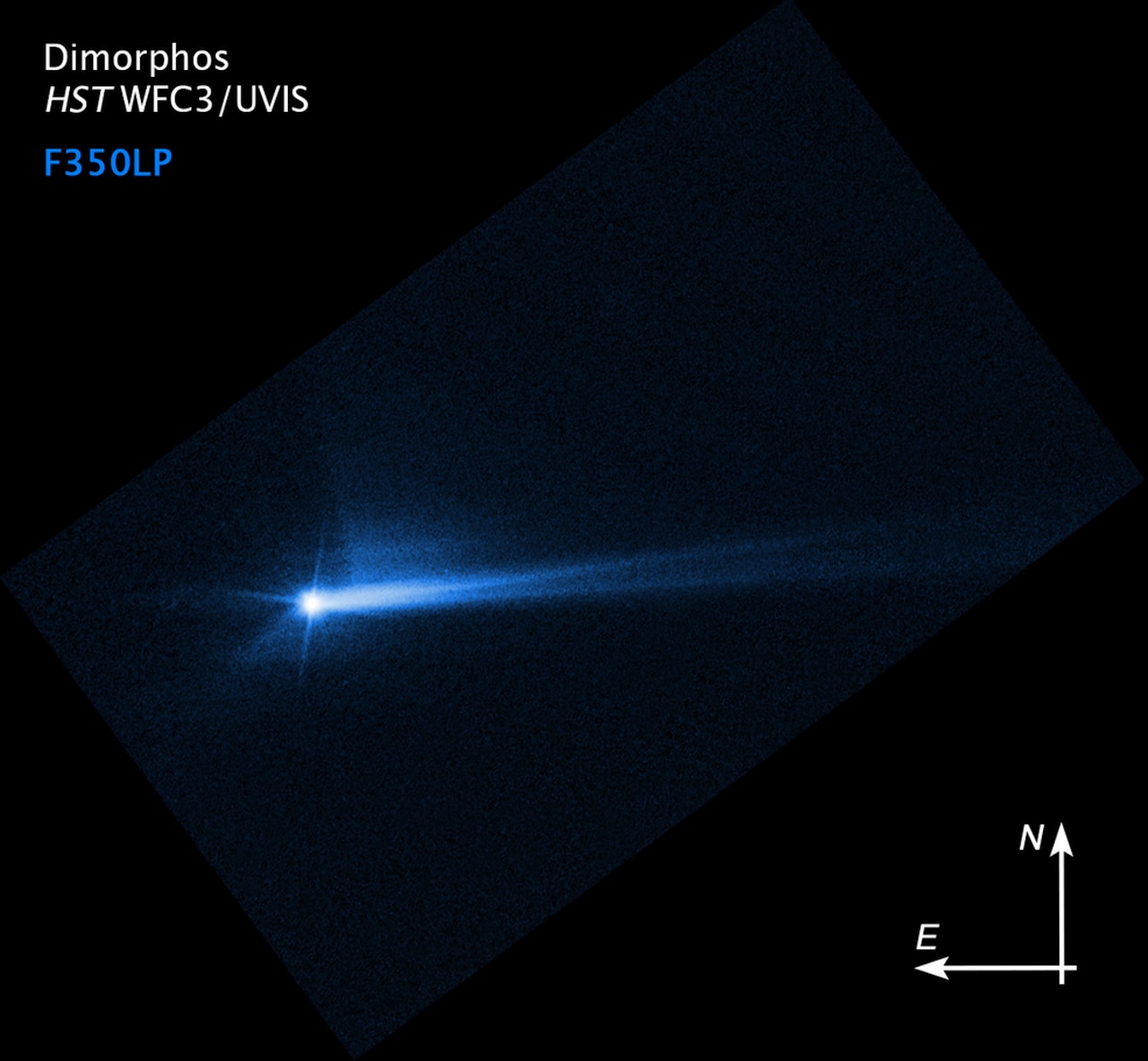NASA: Asteroid deflection mission a success; DART spacecraft changed orbit’s path with targeted hit
NASA said today its DART spacecraft successfully changed the orbit of an asteroid it was intentionally crashed into to test a potential way to deflect future space threats to Earth.
NASA aimed its DART (Double Asteroid Redirection Test) at the asteroid Dimorphos earlier this year. Before DART hit on Sept. 26, the asteroid took 11 hours and 55 minutes to orbit its larger parent asteroid Didymos. After the “intentional collision,” NASA said the orbit time has been cut by 32 minutes, plus or minus 2 minutes.
DART was moving at approximately 14,000 miles per hour when it hit the asteroid, NASA said, and the impact threw “ejecta” – “tons of asteroidal rock” – into space. Scientists are studying that ejecta to understand the collision’s impact even better, but neither the ejecta nor the asteroid is a threat to Earth, NASA said..
“All of us have a responsibility to protect our home planet. After all, it’s the only one we have,” NASA Administrator Bill Nelson said today. “This mission shows that NASA is trying to be ready for whatever the universe throws at us. NASA has proven we are serious as a defender of the planet. This is a watershed moment for planetary defense and all of humanity, demonstrating commitment from NASA’s exceptional team and partners from around the world.”
“This result is one important step toward understanding the full effect of DART’s impact with its target asteroid” said Lori Glaze, director of NASA’s Planetary Science Division at NASA Headquarters in Washington. “As new data come in each day, astronomers will be able to better assess whether, and how, a mission like DART could be used in the future to help protect Earth from a collision with an asteroid if we ever discover one headed our way.”
Neither Dimorphos nor Didymos posed a hazard to Earth before or after DART’s controlled collision with Dimorphos, NASA said. Tracking the test was a worldwide team effort involving observatories in the U.S., Chile and South Africa.
